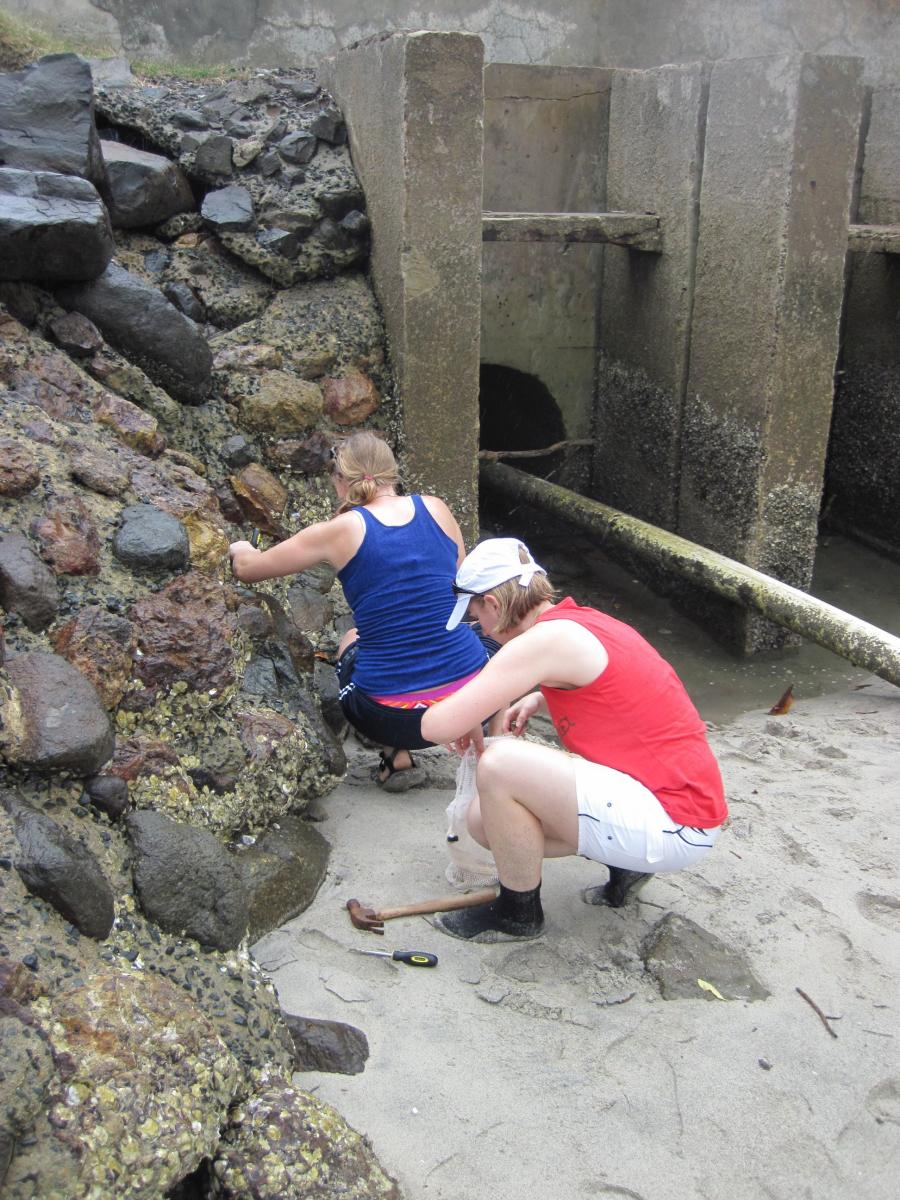
A robin is a robin; it isn’t often confused with other birds. But some marine organisms are very difficult to identify because they look similar, too similar even for taxonomists trained to detect differences between species. Oysters are like this. Oyster shells come in all shapes and sizes. As oysters fight for space on limited hard substrates and battle to survive in tough environments, their shells can change appearance based on the conditions where they live. This trait makes it very hard to distinguish similar looking species. Using DNA, we can identify these difficult species and provide new insights into their distribution, ecology, and ranges - insights that are not possible using shell morphology alone.
Dr. Katrina Lohan and her colleagues Kristina Hill-Spanik, Dr. Mark Torchin, Dr. Ellen Strong, Dr. Robert Fleischer, and Dr. Greg Ruiz used a combination of morphological and molecular data to determine the distribution of oysters in Panama. They collected oysters from three regions along the coast of Panama: near the Panama Canal on the Caribbean side (Canal-Caribbean), near the Panama Canal on the Pacific side (Canal-Pacific), and in the Bocas del Toro archipelago, located on the Caribbean side and >155 miles from the Panama Canal. They collected and identified ten bivalve species and made two important and unexpected discoveries. First, the Eastern Oyster (Crassostrea virginica) occurs on the Caribbean side of Panama where it lives in close contact with another closely related species, the Mangrove Oyster (C. rhizophorae). Second, a non-native species of oyster, the Hooded Oyster or Natal Rock Oyster (Saccostrea “cucullata”) from the Indo-Pacific Ocean, was found in multiple locations along the Caribbean coast of Panama. Both oyster species were previously unknown from Panama, and these discoveries are detailed in their latest paper in the journal Marine Biology.
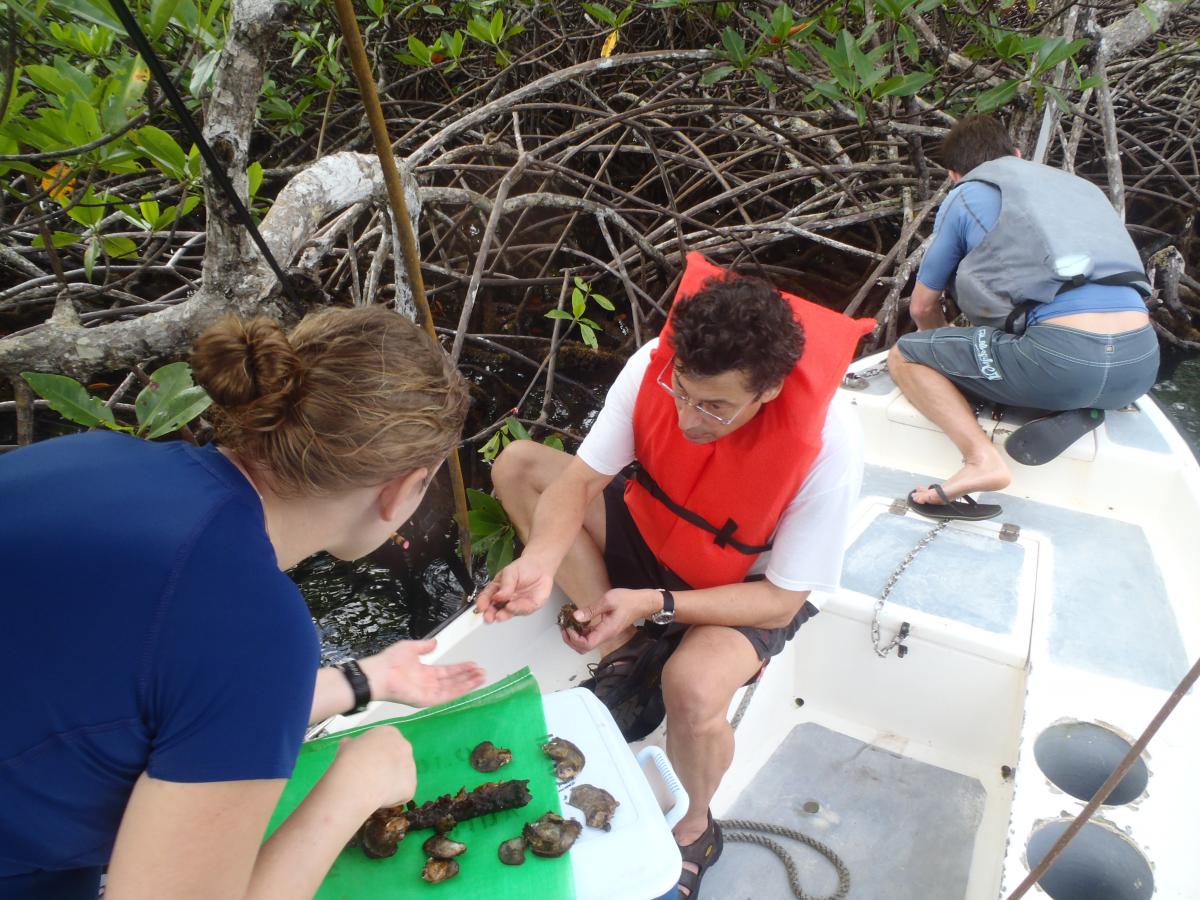
Dr. Lohan and her colleagues went to Panama because oysters are not well studied in the region and the Panama Canal creates the opportunity for new species to arrive on commercial ships from around the world. Many oyster species have widespread and overlapping geographic ranges because they are very good at dispersing by both natural and human-mediated methods. Some species have long-lived planktonic larvae that are moved by ocean currents, but they can also settle on floating debris and the hulls of vessels, and can be moved by aquaculture stocking and in the ballast water of ships. All of these attributes create opportunities for oysters to disperse over great distances. Dr. Lohan hypothesized that the Hooded Oyster they discovered was likely introduced by shipping or boating activities, although she can’t say for certain how or when it was introduced without more evidence.
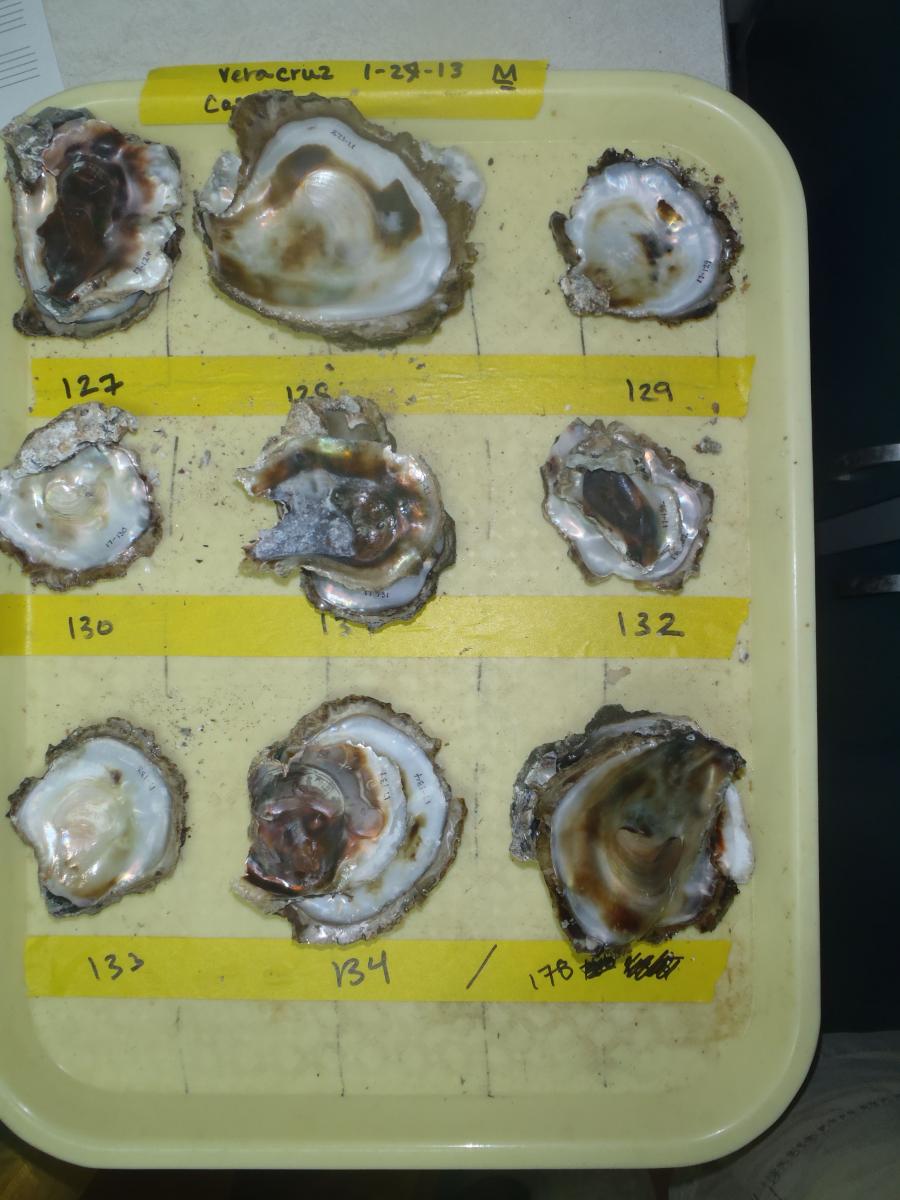
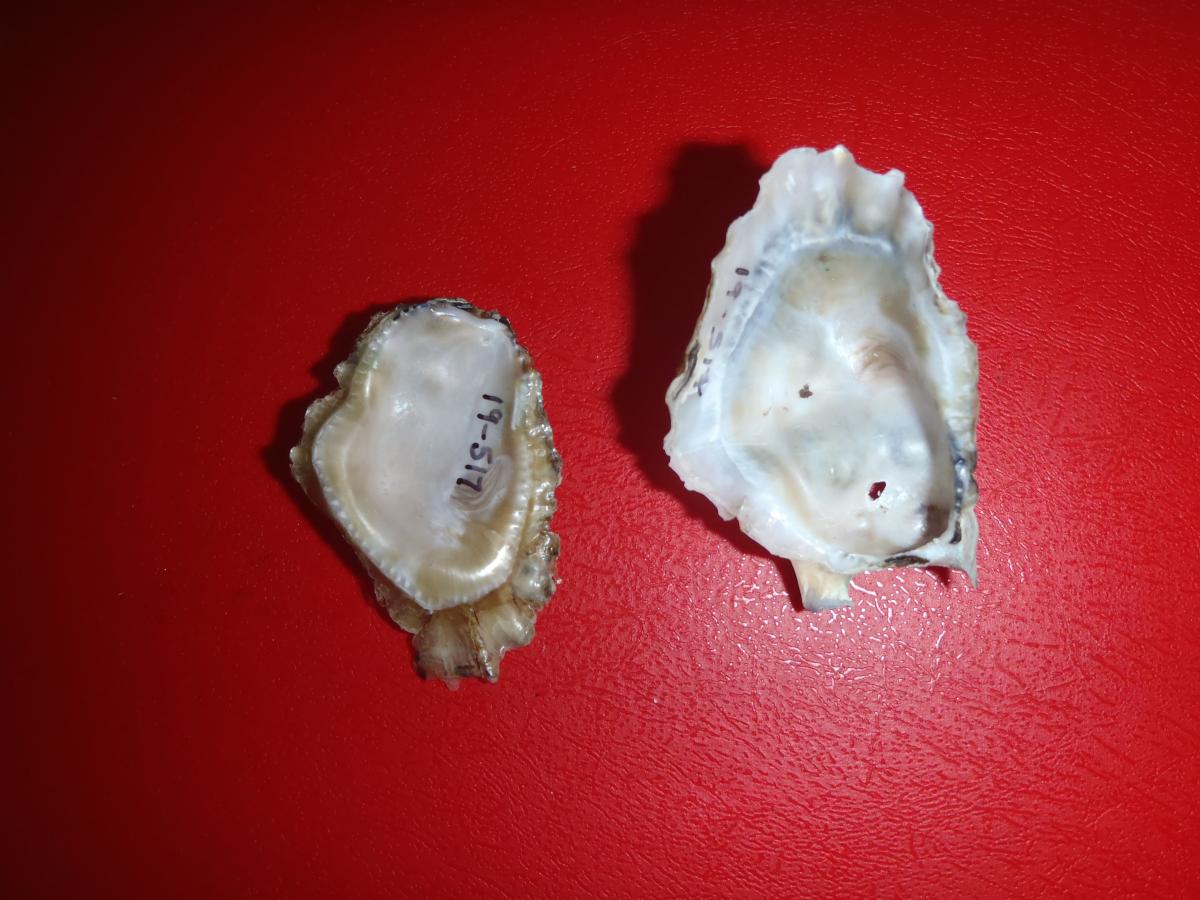
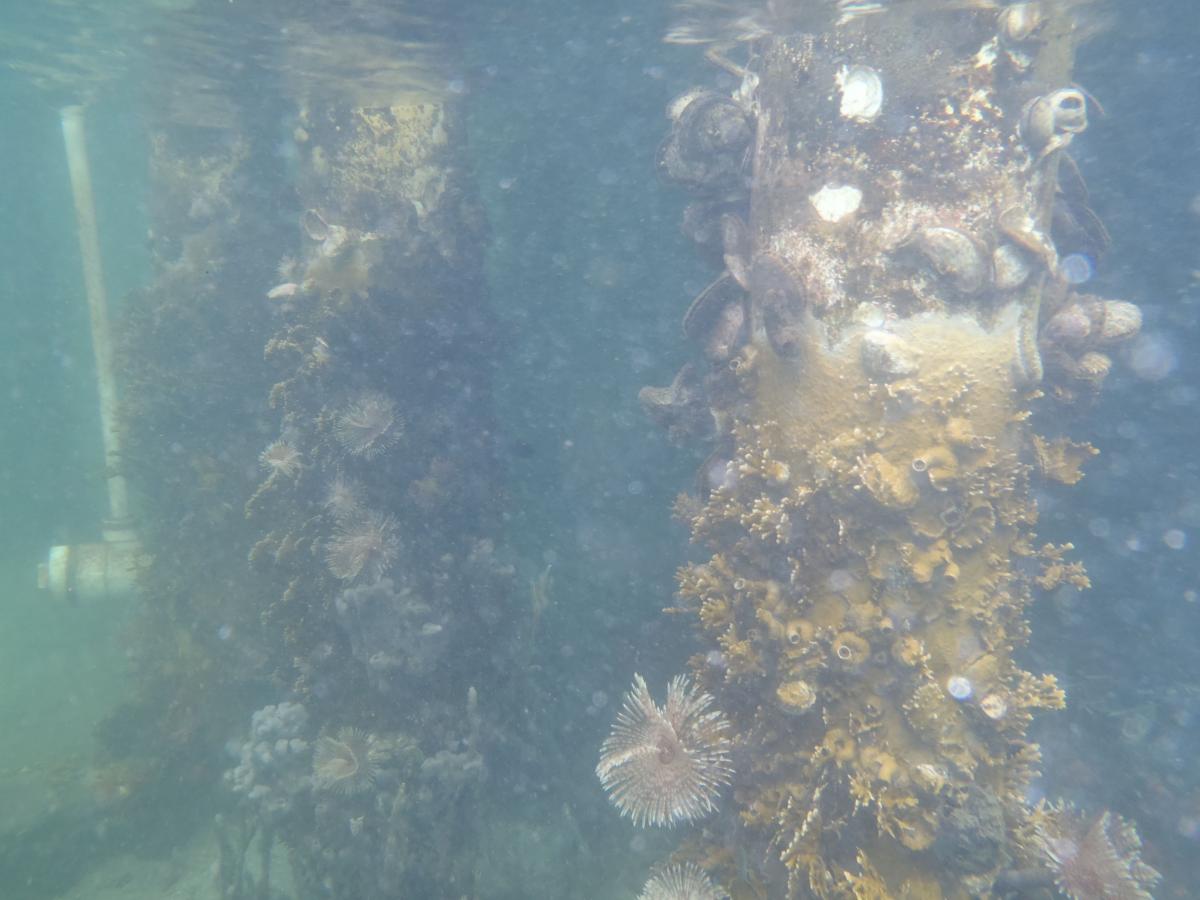
The Hooded Oyster’s species name “cucullata” is in quotes because the current data indicates this name represents a species complex, meaning that multiple species are currently being called by the same name. Because oysters are hard to identify without molecular data, closely related species are often grouped together in reports and literature. So when we talk about the geographic distribution and habitat of Saccostrea “cucullata” we have to include all of the similar species that are currently lumped together under the same name. Returning to the bird analogy, flycatchers are an example of a species complex. Willow, alder, and other similar flycatchers are very hard to tell apart because they differ mainly by song and habitat. At least four species of flycatcher on the East Coast of North America have been grouped together under a single name in older guidebooks, and individual species have been misidentified in museum collections. The hidden biodiversity of species complexes has many consequences depending on the species. Molecular data from other researchers suggests that Saccostrea “cucullata” may actually be seven different oyster species with broadly overlapping geographic distributions.
The availability of molecular data is helping resolve these species complexes and differentiating sister species, like the morphologically similar Eastern Oyster (C. virginica) and Mangrove Oyster (C. rhizophorae). Like the flycatchers, these two oyster species were identified and separated by geographic range and habitat preference. People previously thought that the Eastern Oyster primarily formed reefs or settled on hard substrates in the intertidal and subtidal waters from the Gulf of Mexico northward to Canada. They also thought that Mangrove Oysters live on the roots of mangrove trees from the Caribbean Sea south to Brazil. We now know that Eastern Oysters are in the Caribbean waters of Panama and where these species co-occur they share the same habitat. For example, both species grow in the roots of mangrove trees.
The combination of morphological and molecular data provided the tools needed to identify ten different bivalve species with relative certainty and to determine with confidence that at least one of them was introduced to Panama. This research clearly demonstrated that one method alone wasn’t enough to determine the difference between Mangrove Oysters and Eastern Oysters. Surprisingly, even for large marine animals like oysters, which are conspicuous and well-studied in coastal bays and estuaries around the world, there are still many unanswered questions to be explored.
Pagenkopp Lohan, K.M., Hill-Spanik, K. M., Torchin, M.E., Strong, E.E., Fleischer, R.C., and Ruiz, G.M. 2015. Molecular phylogenetics reveals first record and invasion of Saccostrea species in the Caribbean.Mar Biol (2015) 162:957–968
DOI 10.1007/s00227-015-2637-5


